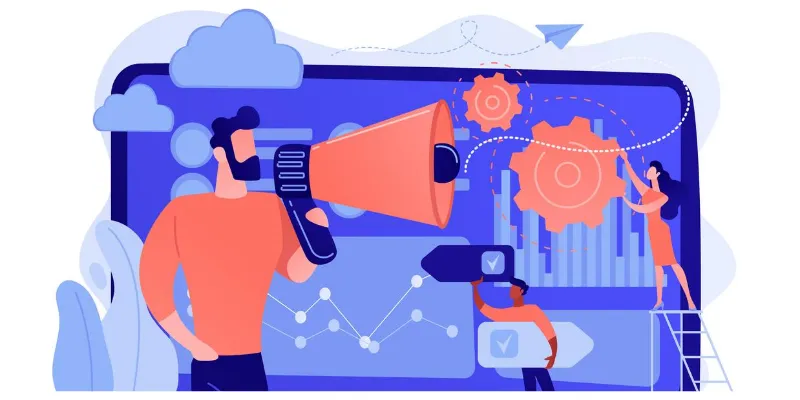New normal for the consumer businesses
Businesses are aggressively automating the supply chain to keep pace with the rapid changes in the retail landscape by using real-time analytics and new-age communication to build sustainability and greater brand value.

Ever since we officially went into our first lockdown in March 2020, COVID-19 has had the distinction of being responsible for whatever has gone wrong with the world in the past few months.
The first couple of weeks of the coronavirus outbreak saw people get into panic-buying mode, hoarding essential groceries, dry rations, cleaning supplies and whatever else they thought would come handy in facing the impending crisis.
Such was the brute impact of the pandemic that it disrupted consumer behaviour practically overnight and set off a chain reaction of events that forced the entire FMCG industry, among others, to realign itself to the ‘new normal’.
Technology has had a huge part to play in this realignment. The McKinsey Report on Retail & Consumer Goods for 2020 indicates that when it comes to adoption of technology, what would have taken a decade, we have managed to cover in mere days.
With social distancing and work-from-home dictating the mode of work now, FMCG and Consumer Goods companies had to face some unique challenges in such unpredictable conditions.
Observing the latest industry trends very closely, we believe these four strategies can really help companies to stay on course in these nebulous times:
Watch consumer purchase patterns
The conditions in the last few months have had significant ramifications on current consumer purchase patterns. The McKinsey report also states that a whopping 91% Indians changed their shopping behaviour due to the lockdown.
This includes both the urban as well as Tier I and Tier II diaspora. Daily trips to the market have become weekly. People are buying larger SKU packs than small ones. Impulse buying has taken a hit due to budget constraints. Monthly purchase items are being split into need-to-have and good-to-have.
People have become more brand-conscious because there is greater concern about quality now rather than just price. Overall consumption of food at home has surged because everybody is perpetually home. There is a newfound respect for maintaining social and personal hygiene.
Capitalising on this sudden surge in demand, many consumer brands have rapidly diversified into wellness and hygiene categories as well. All these behavioural patterns have lead the customers adopt digital channels and shop more on ecommerce platforms.
1. Recalibrate and ramp up sales operations
Kirana stores, the last mile in the retail chain, are goldmines of consumer data but have been notoriously technology-resistant. During the lockdown, since there was no complete digitisation, inventory management was a problem as people started stockpiling and manufacturing went through a temporary freeze.
Wholesalers and distributors ran out of some products and were surplus on others. Physical mobility constraints, an unpredictable future and dynamic consumer patterns have made organisations realise that what worked till now will not work in the future.
For ensuring sustained consumption, there should be a regular supply of products in the market. In volatile conditions like this pandemic, how can consumer companies ensure supply when their sales people have to follow stay-at-home directives and are unable to visit retailers or wholesalers to take stock of inventory? How can they accurately forecast if they don’t have regular feet-on-street to collect data about consumer-buying patterns or market penetration or share of pocket or competitor numbers?
Creating a digital environment to manage their entire supply chain is absolutely critical if companies need to build sales resilience.
To sustain future business and to retain a clear competitive advantage, sales automation technology can help in redesigning and streamlining the complete sales workflow to create a more data-driven sales system that is both future-proof and scalable.
Automation has been the game-changer in helping companies identify real-time data patterns and key metrics responsible for long-term growth and initiate steps to get closer to the end customer.
By replacing manual intervention and reallocating resources to increase process and salesforce efficiency, organisations are able to successfully deliver against the customers’ constantly shifting needs as well as achieve a differentiated, ramped up, highly efficient sales organisation for themselves.
2. Utilise new age communication channels to steer brands towards success
The modes of communication are changing with time and thus pushing businesses, distributors and retailers to opt for modern-day channels to connect with their customers as everything has gone online. Using new-age communication models to create deeper engagement with consumers is a great way to promote one's brand.
WhatsApp currently has 225+ million users in India, which is around half of the total number of Internet users in the country. Not surprisingly then, WhatsApp and Instagram promotions by FMCG companies have caught on like wildfire, enabling brands to gain much higher traction by personalising the communication and putting out TA-specific content.
Influencer Marketing, YouTube channels, internal blogs, etc. are all being used, with fairly decent success, to create excitement around existing brands, new launches, etc. and drive the end users towards purchase.
Using effective and personalised communication can add tremendous value to the brand and reaffirm the credibility and goodwill in the consumer’s mind.
3. Embrace the data
The fourth industrial revolution has changed the way we perceive and use data. AI, Machine Learning, IoT, SaaS and data analytics are all being enmeshed together to cull out valuable, actionable insights that can make companies phenomenally empowered and agile.
Real-time analytics has helped a lot of brands in forming a positive presence in the market together with keeping a tab on their business movements. It has also given them better visibility on buying patterns to help them focus on better product assortments for consumers.
Various SaaS platforms offer customised functionalities such as gathering field-visit data to track movements, real-time field-sales insights, predictive analytics, target achievement status, separate dashboard for managers, etc. to smoothen the entire process and increase overall transparency.
They also provide a treasure trove of consumer data on the basis of product, location or SKUs, etc. that can help make quick analytics-based decisions to move the right product along the right retail channel.
All about taking a wise call
The current crisis has accelerated the pace at which brands were focusing on building trust and brand strength before they eventually move towards creating a robust sales strategy. The current priority should not be on pushing sales but to build a reliable association and relationship with your customers while improving the frequency and quality of service.
Along with a combination of brand visibility, social media presence, consumer engagement and general trade, the FMCG sector can use these four strategies to craft nuanced strategic approaches to come out stronger than ever.
As a long silver lining in the otherwise grey, virulent cloud, we hope these four pointers will change the retail landscape in India for the better.
(Disclaimer: The views and opinions expressed in this article are those of the author and do not necessarily reflect the views of YourStory.)









